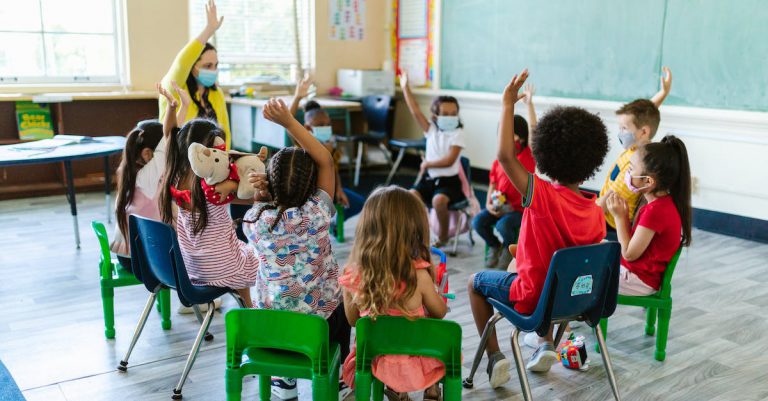Reform schools have been a controversial topic for decades, with many questioning their effectiveness and ethics.
If you’re short on time, here’s a quick answer to your question: A reform school is a facility intended to reform or rehabilitate juvenile delinquents through education, discipline, and therapy.
In this article, we will explore the history of reform schools, their impact on juvenile delinquents, and the controversies surrounding their use today.
The History of Reform Schools
Reform schools, also known as juvenile detention centers, have a long history dating back to the 19th century. These institutions were created to reform young delinquents and provide them with an education and vocational training. However, the history of reform schools is controversial and often associated with abuse and neglect.
Origins and Early Practices
The first reform school in the United States was the House of Refuge, established in New York City in 1825. This institution was designed to provide housing, education, and discipline to young boys who had committed crimes. The House of Refuge was modeled after the British system of juvenile reformatories and believed that children could be rehabilitated through education and discipline.
However, early reform schools were often overcrowded and underfunded, leading to poor living conditions and inadequate care for the children. Many children were subjected to physical and emotional abuse, and some even died while in custody.
The Spread of Reform Schools in the United States
The idea of reform schools quickly spread throughout the United States, and by the mid-1800s, almost every state had established a juvenile detention center. These institutions varied in size and practices, but all shared the common goal of rehabilitating young offenders.
However, as the number of children in these institutions increased, so did concerns about their treatment. Reports of abuse and neglect led to investigations and reforms, but many reform schools continued to operate with inadequate funding and oversight.
Notable Reform Schools and Their Methods
Some notable reform schools in the United States include the Preston School of Industry in California and the Florida School for Boys, also known as the Dozier School for Boys. The Preston School of Industry was known for its strict discipline and vocational training programs, while the Dozier School for Boys was infamous for its physical and sexual abuse of the children in its care.
Today, many reform schools have been closed or reformed to provide better care for children in custody. However, the history of reform schools serves as a reminder of the importance of providing adequate care and oversight for vulnerable populations.
The Impact of Reform Schools on Juvenile Delinquents
Reform schools have been used for decades as a way to rehabilitate troubled youth and reduce juvenile delinquency rates. However, the impact of these schools can vary greatly depending on the methods and practices used. Here, we will explore both the positive outcomes and success stories as well as the negative effects and criticisms associated with reform schools.
Positive Outcomes and Success Stories
When implemented correctly, reform schools have the potential to positively impact the lives of juvenile delinquents. In fact, a study conducted by the National Institute of Justice found that youths who attended reform schools had lower recidivism rates than those who did not. Additionally, reform schools can provide a structured and supportive environment for troubled youth to turn their lives around.
There are also numerous success stories of individuals who credit reform schools with changing their lives for the better. For example, former NFL player, Cris Carter, has spoken publicly about how attending a reform school as a teenager helped him turn his life around and ultimately led to his successful football career.
Negative Effects and Criticisms
Despite the potential for positive outcomes, there are also a number of criticisms associated with reform schools. One major concern is the use of harsh disciplinary measures, such as isolation and physical restraints, which can cause lasting psychological damage. Additionally, some critics argue that reform schools do not address the underlying issues that lead to delinquency in the first place, such as poverty and trauma.
Furthermore, there have been cases of abuse and neglect in some reform schools, highlighting the need for proper oversight and regulation. It is important to thoroughly research any potential reform school and ensure that it has a track record of success and a commitment to ethical practices.
The Importance of Proper Evaluation and Treatment
Ultimately, the impact of reform schools on juvenile delinquents depends on a variety of factors, including the individual’s specific needs and the quality of the school’s programs. It is essential that youths receive proper evaluation and treatment to address the root causes of their behavior and provide them with the tools they need to succeed.
Moreover, it is important for individuals and families to explore all available options before considering a reform school. Alternative approaches, such as counseling, mentorship, and community-based programs, may be more effective in addressing the underlying issues that lead to delinquency and promoting positive behavior change.
Controversies Surrounding Reform Schools Today
Reform schools have been around for centuries, but in recent years, they have come under intense scrutiny due to allegations of abuse and neglect. Here are some of the controversies surrounding reform schools today:
Abuse and Neglect Allegations
One of the biggest controversies surrounding reform schools today is the prevalence of abuse and neglect. Many former students have come forward with stories of physical, emotional, and sexual abuse at the hands of staff members. These allegations are not new, but they have gained more attention in recent years due to social media and investigative reporting.
In some cases, the abuse and neglect at reform schools have led to tragic outcomes. For example, in 2016, the Florida Department of Law Enforcement launched an investigation into the now-closed Dozier School for Boys after dozens of unmarked graves were discovered on the school’s grounds. The investigation uncovered evidence of physical and sexual abuse, as well as other forms of mistreatment.
Lack of Regulation and Oversight
Another major controversy surrounding reform schools today is the lack of regulation and oversight. In many states, there are no specific laws governing reform schools, and they are not subject to the same level of scrutiny as other types of educational institutions. This lack of oversight can create an environment where abuse and neglect can occur without consequences.
Additionally, some reform schools operate as for-profit businesses, which can create a conflict of interest between providing quality education and maximizing profits. In some cases, this has led to a focus on punishment and discipline rather than rehabilitation and education.
Alternatives to Reform Schools
Given the controversies surrounding reform schools, many people are advocating for alternatives to these institutions. One of the most promising alternatives is restorative justice programs, which focus on repairing harm and rebuilding relationships rather than punishment and retribution.
Restorative justice programs have been shown to be effective in reducing recidivism rates and improving outcomes for young people. These programs can be implemented in schools, juvenile justice systems, and other settings.
Other alternatives to reform schools include community-based programs, mentoring and counseling services, and educational programs that incorporate trauma-informed care and other evidence-based practices.
Conclusion
Reform schools have a complex history and continue to be a topic of debate in the realm of juvenile justice. While some argue that they can be effective in rehabilitating delinquent youth, others point to their potential for abuse and lack of oversight. Regardless, it is clear that proper evaluation and treatment are essential in any program intended to rehabilitate young offenders.
We hope this article has provided a comprehensive overview of reform schools and their impact on society. By understanding their history and current controversies, we can work towards more effective and ethical solutions for juvenile delinquency.






